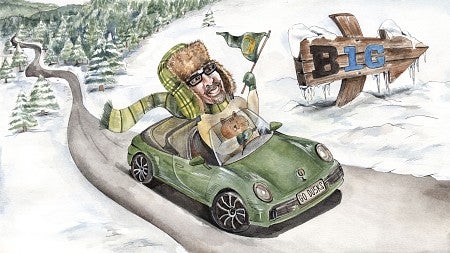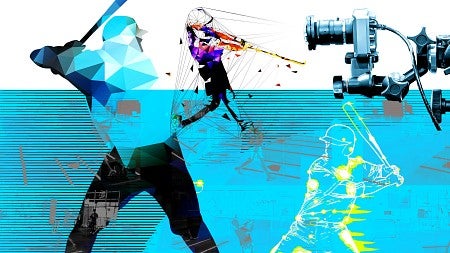
Ducks Parlay Teamwork into Leadership of a Rising Sport
Individual athleticism and a strong team ethic draw women athletes to the fast-rising sport of acrobatics and tumbling
By Sage Kiernan-Sherrow • Photos courtesy Oregon Athletics • Video by Charlie Litchfield, UO Creative Media
January 17, 2024
6 min read
The first thing you notice is the flurry of limbs.
Legs propel bodies in a dash across the mats before shooting skyward in daring leaps. Arms brace against the straining weight of bodies standing on shoulders, then radiate outward like triumphant rays of sunshine.
As iLoveMemphis’s “Hit the Quan” plays on speakers during practice, forty-five of the nation’s top former gymnasts, acrobats, and cheerleaders flip, twist, and tumble in the fluorescence of Matthew Knight Arena. Team members laugh, dance, and cheer each other on, sneakers squeaking on the polished floor. Women of different shapes, sizes, and ethnicities celebrate one another as they practice new stunts and pursue personal bests. On the sidelines, with their gym bags lined in a neat row, athletes with tired muscles and red faces receive treatment from teammates and friends using a Theragun massage gun.
This is acrobatics and tumbling, an emerging collegiate sport that demands both individual skill and the cohesion of a team. Among more than fifty schools nationwide that compete, the Ducks have excelled, due to daring leadership and their commitment to the sport’s evolution—and each other.
Take the Keogh twins, for example.
Seniors Emma and Katie Keogh helped the Ducks to their top scores of the 2022–23 season, including three victories that propelled Oregon to No. 2 in the nation. This, after the uncertainty of their first year, during which Katie was diagnosed with carcinoid cancer. Unable to compete, she instead had to relearn the foundations of her beloved sport.
“I was super lucky that I had good trainers and doctors specific to Oregon Athletics which allowed me to gain my strength back,” Katie says in a GoDucks.com video. “There was no script to follow, so it was working at my own pace, telling them what I thought I was capable of and bouncing off that. Your mind remembers everything that your body is able to do, so I took that and ran with it and was able to get some of the basics back that I didn’t think I’d potentially be able to.”
For Emma, watching her twin fight to be back on the court was “a huge adjustment”—but worse was not being able to support her in person during periods of Katie’s recovery. Luckily, she had the acrobatics and tumbling team by her side.
Says Emma: “Coming here and having forty-five people that I pretty much just met be able to listen to me and be there for me and be the people that I needed during such a hard time was such a great experience that I wouldn’t trade for the world.”
Leaping over obstacles
Acrobatics and tumbling almost didn’t become the sport it is today. It started in 2003, driven by a desire to emphasize team dynamics and the strength and grit of women athletes.
Gymnastics lacked the benefits of team building and competitive cheerleading coaches faced barrier after barrier in gaining support for their sport at the university level. But change was coming: against a backdrop in which the vast majority of institutions have failed to meet Title Nine rules requiring equitable opportunities for women to participate in sports, founders of acrobatics and tumbling began brainstorming a sport for women with cheerleading or gymnastics backgrounds.
Renee Baumgartner, MS ’89 (individualized program), PhD ’96 (educational policy and management), and Felicia Mulkey were two of those founders. The duo—Baumgartner was UO’s senior associate athletics director and Mulkey was Oregon’s first acrobatics and tumbling coach—led the charge for the “team stunts and gymnastics” team in 2007, following the lead of the University of Maryland. In 2010, they collaborated with other universities to establish the official rules of acrobatics and tumbling, basing it on gymnastics scoring and six events, and stripping it of some of the glitz and glamour of the sport’s predecessors.
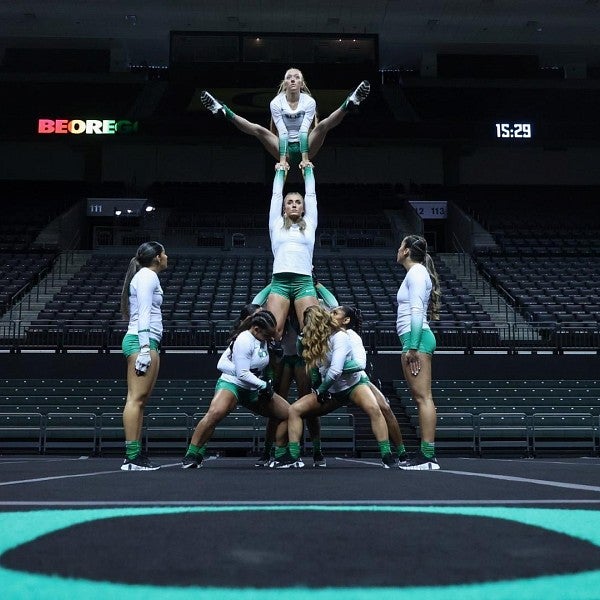
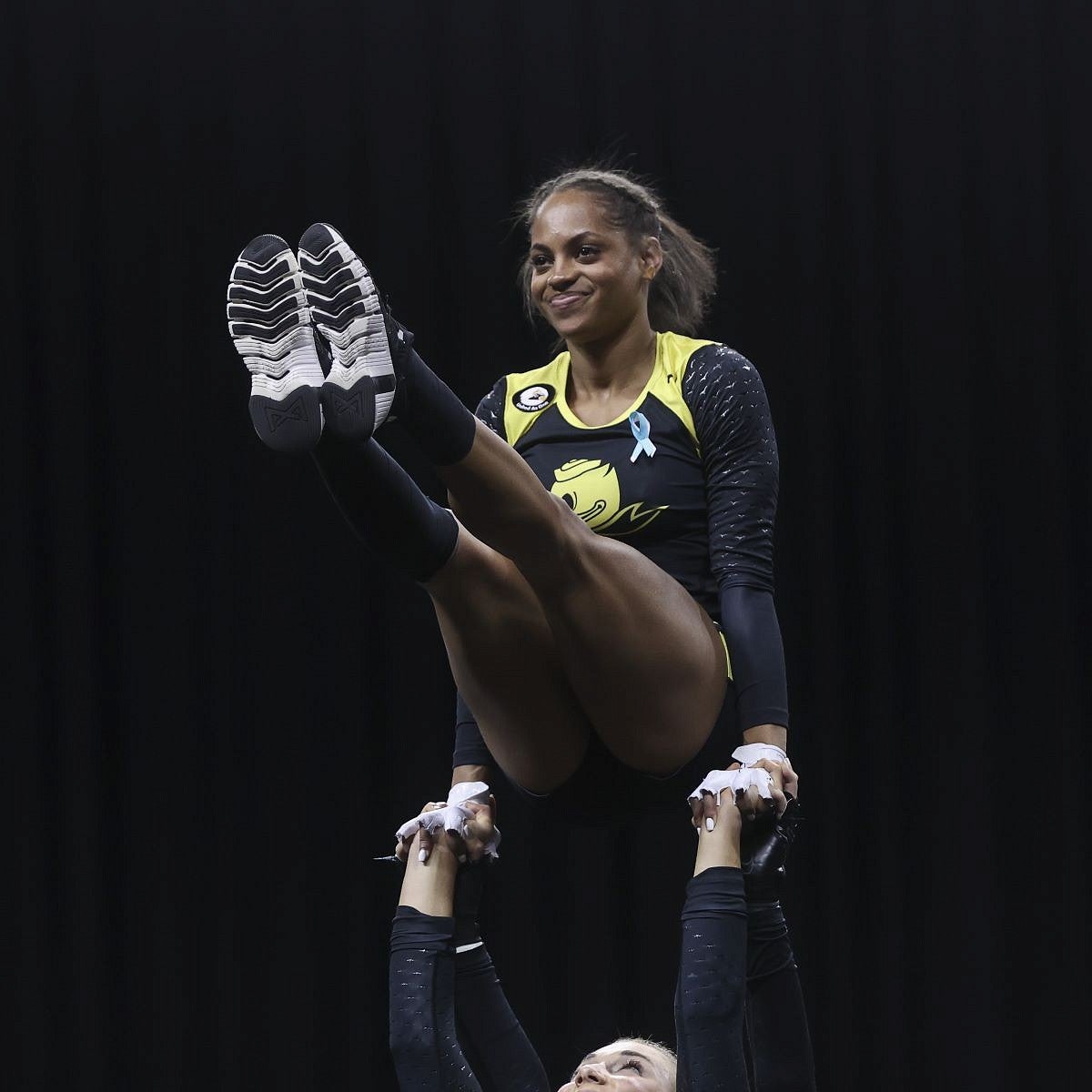
Cami Wilson, BS ’23 (business administration), who is pursuing a master’s in business, was impacted by the limitations of cheerleading as a sport. She was a four-time USA all-American in high school cheerleading who came to Oregon wanting to be a Division I athlete.
Learning that acrobatics and tumbling would give her the same opportunities as a football or basketball player empowered her, and she has competed for four years.
However, Wilson and teammate Emma Keogh say the sport’s newness and lack of a male equivalent means they must keep working to reach the popularity enjoyed by other athletics.
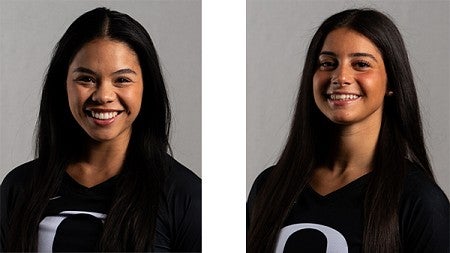
“[Acrobatics and tumbling] might not seem as common or be as widely known but it’s very demanding and hard,” Keogh says. “It’s just like other sports. It requires you to be at the best possible level and you’re competing against the best people in your area of expertise. It’s our passion and our lifestyle and it’s what we pour our hearts into every single day.”
Adds Wilson: “Our sport is brutal. You get one shot out there; you get one performance, you get one heat and that’s it. Whereas in every other sport you may get multiple chances to recover from major mistakes, we do not. It creates a different level of pressure that some people don’t necessarily understand.”
Women in Flight: Giving Wings to Women’s Athletics

Women in Flight was launched in 2014 with a $1 million gift from Nancy and Dave Petrone, BS ’66 (economics), MBA ’68 (finance and business environment), to boost awareness and financial support for UO women’s athletics. The program has raised more than $15 million for acrobatics and tumbling and the other women’s sports.
“Acrobatics and tumbling is a sport created for women by women and we are so lucky to have it on our campus,” says Alexis (Cross) Smith, BS ’18 (business administration), director of Women in Flight and a four-year acrobatics and tumbling letter winner. “The UO program has been a national leader since the inception of the sport and has not only brought several national championships to our university but cultivates gritty, poised, and strong women who become leaders across our country. I’m grateful to call many of them friends.”
Taylor Susnara, BS ’18 (social science), UO acrobatics and tumbling coach, credits Women in Flight and Oregon Athletics for their support, including the hosting of the 2022 National Collegiate Acrobatics & Tumbling Association championship, where Oregon placed second.
“As a smaller sport, an emerging sport, we are always evolving and fighting for that awareness within the community,” says Susnara. “The UO does a great job of supporting us and our student athletes. It’s reassuring to know we can collaborate and come together to build a strong, steady program as we continue to evolve as a sport.”
Do-it-for-each-other mindset
Luckily, Wilson has coach Taylor Susnara, BS ’18 (social science), to guide her through the ups and downs—and twists and flips—of winning and losing as a team. Where Wilson feels pressure, Susnara sees an opportunity to improve oneself for the good of the sport. She was one of the first athletes recruited by Mulkey and drove Oregon’s second place run last season.
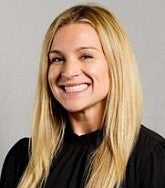
Susnara began gymnastics training when she was three years old and progressed to the elite level before an injury halted her ascent at age twelve. In high school, she pivoted to competitive cheerleading, but always felt something was missing. When she was introduced to acrobatics and tumbling, everything clicked. After competing for the Ducks from 2015 to 2018, Susnara became the assistant under former coach Keenyn Won, BS ’13 (sociology), taking over after Won’s departure in 2021. With a love for strategy and athlete development, Susnara says the hardest—though most rewarding—parts of coaching are building a team culture and learning how to incorporate and develop new skills each season.
“My philosophy is ‘work hard, play hard,’ so really putting in a lot of effort into how we prepare physically, mentally, and emotionally for the season,” Susnara says. “I always say, ‘it’s not about the team, it’s about the program,’ so just diving into that and having a do-it-for-each-other mindset as we go through. I love developing relationships with the athletes, I love getting to know all their quirky sides in and out, just goofing around and helping them get better at what they love doing.
After recruiting seventeen new athletes in 2023, Susnara is preparing them for the season ahead. The team must first learn to trust one another. There’s genuine fear on some of the women’s faces as they’re lifted into the air by a new teammate the first time, but Susnara talks them through every step until they’re ready for national competition.
As for the Keogh sisters and Wilson, it’s their last year together, each walking away with hard-earned lessons from their time on the team. The sport taught Emma Keogh not to doubt herself. Katie Keogh learned how to live every day to the fullest and overcome adversity. And Wilson found the team experience she was looking for.
“I can’t wait for the day, whether it’s this season or in the years and months to come, for everyone to know what acro is and want to be a part of it,” Wilson says. “I want every single young female athlete to be able to grow up and say, ‘I could do acro.’”
Acrobatics and tumbling: what to look for

There are three positions: Tops perform in-air stunts. Tumblers perform stunts on the floor. Bases provide foundations. Teams compete against each other in six events: compulsory, acro, pyramid, toss, tumbling, and team. The final event is a routine of two minutes and forty-five seconds choreographed to music, during which twenty-four teammates perform at once. Judges award points based on criteria such as difficulty and execution.
University of Oregon acrobatics and tumbling begins its seven-meet season February 11 at Matthew Knight Arena. Meets are streamed live on the Oregon Athletics YouTube channel or on the Pac-12 network.
Sage Kiernan-Sherrow, MA ’21 (journalism), is an editor and writer for Advancement Communications.


